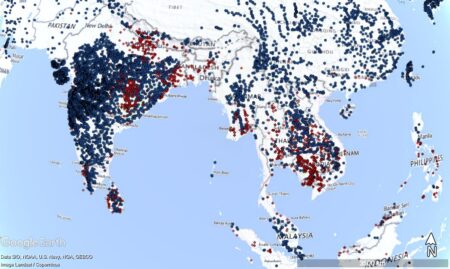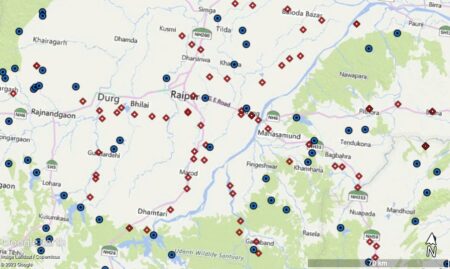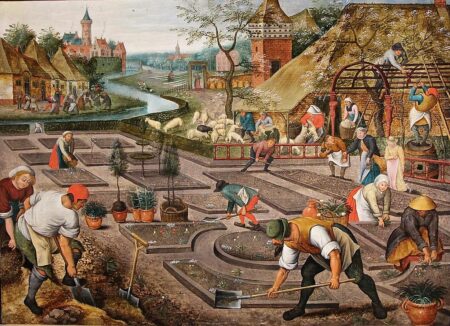- Palaeogenomics of Upper Palaeolithic to Neolithic European hunter-gatherers. Farmers may have pushed hunter-gatherers to the northern edge of Europe while also in mixing with them.
- Identification and exploitation of wild rye (Secale spp.) during the early Neolithic in the Middle Euphrates valley. Those Europeans on the move — both farmers and hunter-gatherers — would have been familiar with wild rye, but that’s pretty much gone from the Fertile Crescent now.
- Caribbean Deep-Time Culinary Worlds Revealed by Ancient Food Starches: Beyond the Dominant Narratives. But enough about Europe. It wasn’t always all about cassava in the pre-colonial, and indeed colonial, Caribbean…
- Reuniting the Three Sisters: collaborative science with Native growers to improve soil and community health. …as there was also the maize/beans/squash system in that part of the world, and may well be again.
- Understanding Early Modern Beer: An Interdisciplinary Case-Study. Something else that could come back is early modern Irish beer, and I’d be there for that.
- Forgotten forest relics: Apple trees (Malus spp.) in eastern U.S. forests. Old abandoned orchards, and escapes therefrom, could have lots of interesting apple diversity. Early modern American cider, anyone?
- Building a feral future: Open questions in crop ferality. And it’s not just apples. It’s a whole movement in fact.
- Resynthesized Rapeseed (Brassica napus): Breeding and Genomics. Sure, we can rebuild it, we have the technology. But will it go feral on us again?
Dams, damn dams, and accessions
Every once in a while a new dam dataset crops up. Dam, not damn. Well, maybe damn as well. Anyway, when that happens, I feel compelled to mash it up with accession locality data. Because if I don’t do it, who will?
The new dataset is the Global Dam Tracker, and you can download it and everything of course. It’s pretty easy to then upload it to Google Earth and play around with it. Including combining it with data on wild Oryza accessions from Genesys, for example.
On this map, the dams are shown in blue and wild rice accessions in red.
You can zoom in if you’re worried about the long-term in situ future of any given population.
Not for the first time, I wonder about the feasibility of one day automatically and in real time combining data from multiple potential stressors, including dams, to predict the risk of genetic erosion around the world. Something that AI should be able to do, surely?
Spring forward!
Pieter Breughel the Younger, CC BY-SA 4.0, via Wikimedia Commons
Brainfood: Seed imaging, Disease imaging, Seed traits, Irvingia shape, Mexican tomatoes, Fine cacao, Wine tourism, Wild peas
- Implication of high variance in germplasm characteristics. Last week’s Brainfood focused on genomic variation. This week, in contrast, we look at phenotyping. But not old school phenotyping, oh no. This paper, for example, uses fancy-ish, but not especially expensive, imaging.
- High-throughput imaging of powdery mildew resistance of the winter wheat collection hosted at the German Federal ex situ Genebank for Agricultural and Horticultural Crops. This paper uses somewhat fancier, and possibly more costly, imaging. Vorsprung durch Technik.
- Low availability of functional seed trait data from the tropics could negatively affect global macroecological studies, predictive models and plant conservation. Even embryos in seeds can be phenotyped.
- Agroforestry Trees’ Architecture as Evidence of Domestication: Case of African Mango Tree in the Dahomey Gap, West Africa. I wonder if one could describe the shape of tree crowns from space? I hope not, this work sounded like fun…
- Diversidad biocultural de tomate nativo en Oaxaca, México. Phenotype is socially constructed in tomato too.
- Who Defines Fine Chocolate? The Construction of Global Cocoa Quality Standards from Latin America. Can you standardise a social construct such as the flavour of chocolate, and would it help farmers? Maybe.
- Douro wine-tourism engaging consumers in nature conservation stewardship: An immersive biodiversity experience. How to make money out of a socially constructed phenotype.
- Natural range, habitats and populations of wild peas (Pisum L.). We should get out of our labs and look for wild peas in the oases of the Sahara Desert, the subalpine communities of Georgia, and the Asir Mts of Yemen. But will we know them when we see them?
What have micronutrients ever done for us?
Over on Twitter, Ty Beal of GAIN has a thread on micronutrients. It’s based on a recent lecture and it has useful data and nice slides. Here’s the money quote:
In lower income countries micronutrient deficiencies are due in part to people not having access to diverse diets. They want healthy, nutrient dense foods but can’t afford them or access them in markets.


